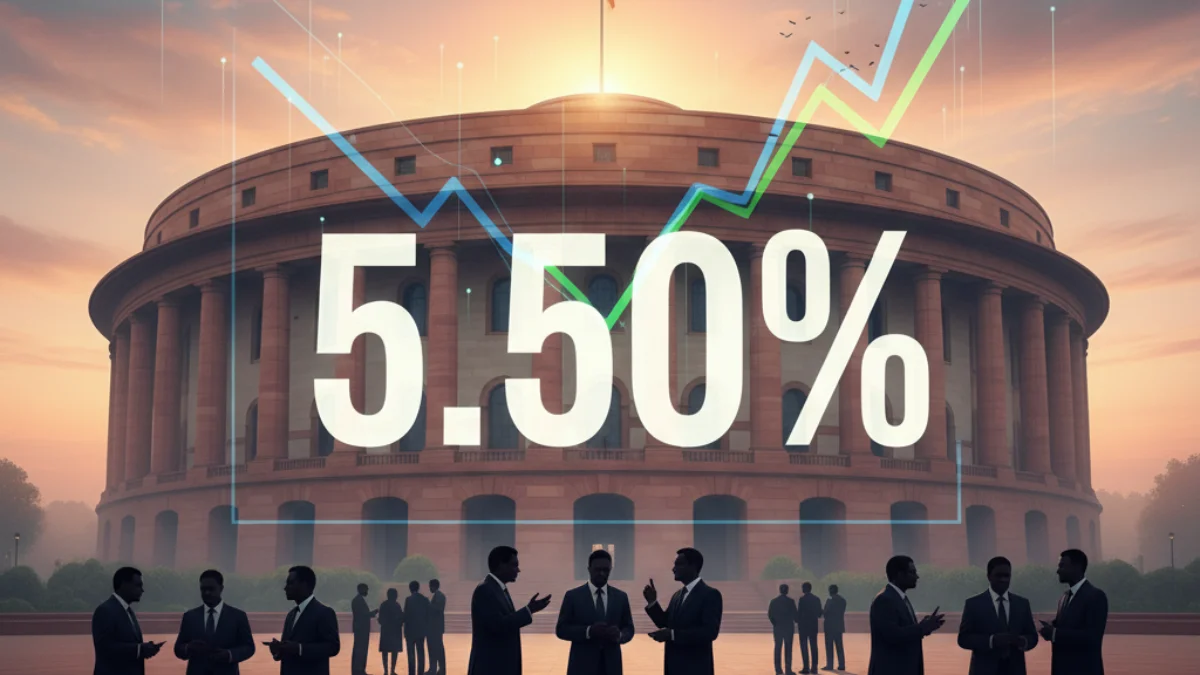The Reserve Bank of India chose stability in its October 2025 review, keeping the repo rate at 5.50%. The Monetary Policy Committee (MPC) acted unanimously, reflecting a delicate balance: cooling inflation, improving growth, and global uncertainty.
The repo rate, which sets borrowing costs across the economy, directly impacts home loans, EMIs, and corporate credit. By holding rates, the RBI signaled it is prioritizing sustained growth while guarding against a premature easing cycle.
The Core Decision
Inflation Forecast Revised
CPI inflation for FY26 has been revised downward to 2.6%, reflecting cooling food and fuel costs. This marks a significant shift from earlier estimates. Lower inflation strengthens RBI’s case for a patient stance.
Growth Outlook Strengthened
The RBI upgraded India’s GDP growth forecast to 6.8% in FY26, up from 6.5%. Better credit flows, domestic demand recovery, and a favorable monsoon underpin this optimism.
Policy Stance
The central bank’s stance remains neutral, giving it room to maneuver. Analysts suggest a possible 25 bps cut in December if current trends hold.
Market and Expert Reactions
Banking and Credit
Banks welcomed stability. Rising borrowing costs from previous cycles had already been absorbed, and many lenders see scope for smoother transmission in coming quarters.
Bond yields eased slightly, with markets betting on a rate cut later this year.
Borrowers
Borrowers awaiting relief may need to be patient. While no immediate cut in EMIs is expected, the RBI’s dovish tone hints that easier rates could arrive by December.
External Sector and Risks
India’s external balance appears stable with a current account deficit of just 0.2% of GDP in Q1 FY26. Still, oil price volatility and global trade tensions remain watchpoints.
Implications for 2026
Room for a December Cut
If inflation stays benign and growth momentum continues, a December cut looks increasingly likely. This could provide much-needed relief for consumers and corporates.
Transmission Remains Key
The RBI has repeatedly stressed the need for quicker transmission of rates to end borrowers. For a deeper dive, see RBI unveils norms to enable faster transmission of rates.
Structural Push
The policy is accompanied by regulatory measures aimed at improving credit access and ensuring liquidity management. These align with broader financial sector reforms and investment flows. For context, see Unleash Capital launches ₹300 crore fintech fund in India.
Conclusion
RBI’s decision to hold the repo rate at 5.50% underscores its balancing act between growth and inflation. With inflation easing and growth prospects brightening, the central bank opted for patience.
The door to a December cut is open, but risks — from crude oil to global volatility — remain. For real-time updates on monetary policy, see RBI Monetary Policy 2025 repo rate steady at 5.5%. Meanwhile, markets continue to monitor how lenders and investors adapt, as highlighted in Netweb share price today live NSE/BSE updates.
Frequently Asked Questions
Q: What is the repo rate?
It is the rate at which the RBI lends to commercial banks, influencing lending rates and overall credit costs.
Q: Why did the RBI keep the repo rate unchanged?
Because inflation is easing, growth is improving, and the central bank wants to avoid premature moves.
Q: When is the next rate cut expected?
Analysts see December 2025 as a possible window, depending on inflation and global conditions.
Q: How does this affect borrowers?
Borrowers will not see immediate EMI cuts, but relief could come if a December cut materializes.
Q: What risks could change RBI’s stance?
Oil price spikes, global volatility, or a surprise uptick in inflation could force RBI to hold rates longer.

